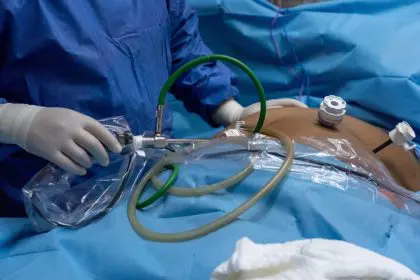Panic attacks extend far beyond psychological distress, manifesting as powerful physical experiences that can be mistaken for serious medical emergencies. The physical symptoms often prove so overwhelming that they prompt emergency room visits from people convinced they’re experiencing life-threatening conditions.
Understanding these bodily responses helps those experiencing panic attacks and those witnessing them recognize what’s happening and respond appropriately.
The stress response activation
Panic attacks begin in the brain but quickly cascade throughout the entire body. The amygdala, the brain’s emotional processing center, misinterprets a situation as threatening and triggers the body’s emergency system.
This fight-or-flight response floods the body with stress hormones like adrenaline and cortisol, preparing for a danger that doesn’t actually exist. This evolutionary survival mechanism activates within seconds, affecting multiple body systems simultaneously.
Cardiovascular changes
Among the most alarming physical symptoms are those affecting the heart and chest:
Rapid heartbeat: The heart rate increases dramatically to pump more blood to muscles, preparing them for action.
Chest tightness: Many experience constriction or pressure in the chest that mimics heart attack symptoms, often becoming the focus of intense fear.
These cardiovascular changes feel particularly frightening because they closely resemble serious cardiac events, leading many first-time panic attack sufferers to believe they’re experiencing heart failure.
Breathing disruptions
Breathing patterns alter significantly during panic attacks:
- Breathing becomes shallow and rapid
- Hyperventilation reduces carbon dioxide levels in the blood
- Oxygen intake may actually increase, despite feeling breathless
- Sensations of choking or suffocation often occur
This disordered breathing creates additional physical symptoms including lightheadedness, tingling in extremities, and dizziness. The perceived inability to breathe properly often intensifies the panic, creating a self-perpetuating cycle.
Digestive system reactions
The digestive system responds strongly to the body’s stress signals:
Blood diversion: During panic, blood flow shifts away from the digestive tract toward muscles needed for fighting or fleeing.
Stomach distress: This blood flow change can cause nausea, stomach cramping and digestive discomfort.
Urgent bathroom needs: Some experience immediate bowel or bladder urgency during panic attacks.
These gastrointestinal symptoms reflect the body’s prioritization of survival over digestive functions during perceived emergencies.
Muscle and temperature responses
Physical manifestations also appear in the muscular system and temperature regulation:
Trembling: Excess adrenaline causes visible shaking, particularly in the hands and legs.
Sweating: The body initiates cooling mechanisms in anticipation of physical exertion.
Muscle tension: Muscles throughout the body tighten in preparation for action, particularly in the neck, shoulders and jaw.
This muscle activation without physical release often leads to soreness and fatigue that persists after the panic subsides.
Sensory and perception changes
Panic attacks significantly alter sensory perception:
Vision distortions: Many experience blurred vision, tunnel vision or heightened sensitivity to light.
Hearing changes: Sounds may seem louder, more distant or distorted.
Derealization: The environment may suddenly seem unfamiliar or unreal.
Depersonalization: Some feel detached from their bodies, as if observing themselves from outside.
These perception shifts reflect the brain’s altered processing during extreme stress states and often intensify the feeling of losing control.
Post-attack physical aftermath
Once a panic attack subsides—typically peaking within 10-15 minutes—the physical toll becomes apparent:
Exhaustion: The body experiences significant fatigue similar to recovering from intense physical exertion.
Cognitive fog: Mental clarity diminishes as the brain recovers from the stress response.
Muscle soreness: Tension held during the attack often results in physical discomfort afterward.
This recovery period varies in duration but reflects the genuine physical exertion the body undergoes during panic episodes.
Medical considerations
While panic attacks aren’t life-threatening, their symptoms overlap with serious medical conditions. Medical evaluation becomes appropriate when:
- Chest pain occurs with physical exertion
- Heart rhythm appears irregular
- Sudden weakness or numbness affects one side of the body
- Vision loss occurs
- Speech becomes slurred or confused
These symptoms warrant immediate medical attention to rule out conditions requiring urgent treatment.
Physical symptom management
Several techniques specifically target the physical manifestations of panic:
Breathing regulation: Slow, deliberate breathing helps correct hyperventilation and stabilize heart rate.
Progressive muscle relaxation: Systematically tensing and relaxing muscle groups reduces physical tension.
Cold sensation application: Exposing the face to cold water or holding cold objects can help interrupt the panic cycle by activating the parasympathetic nervous system.
Grounding exercises: Focusing on immediate sensory experiences in the environment helps counteract derealization symptoms.
These physical interventions can reduce symptom intensity and duration when implemented during an attack.
Long-term physical approaches
Beyond managing acute episodes, several approaches address the physical component of panic:
- Regular cardiovascular exercise helps regulate stress hormones
- Reducing stimulants like caffeine decreases physical vulnerability to panic
- Consistent sleep patterns stabilize the body’s stress response system
- Mindfulness practices train the body to recognize and calm physical tension
These strategies create physical resilience against future panic episodes by regulating bodily systems involved in the stress response.
Panic attacks represent genuine physical events—not merely psychological experiences. The body responds with real physiological changes that feel frightening precisely because they mimic dangerous medical conditions.
Understanding these physical mechanisms helps remove stigma and validates the intense bodily experience of panic. With appropriate recognition and management strategies, both the frequency and intensity of these physical symptoms can diminish over time.












